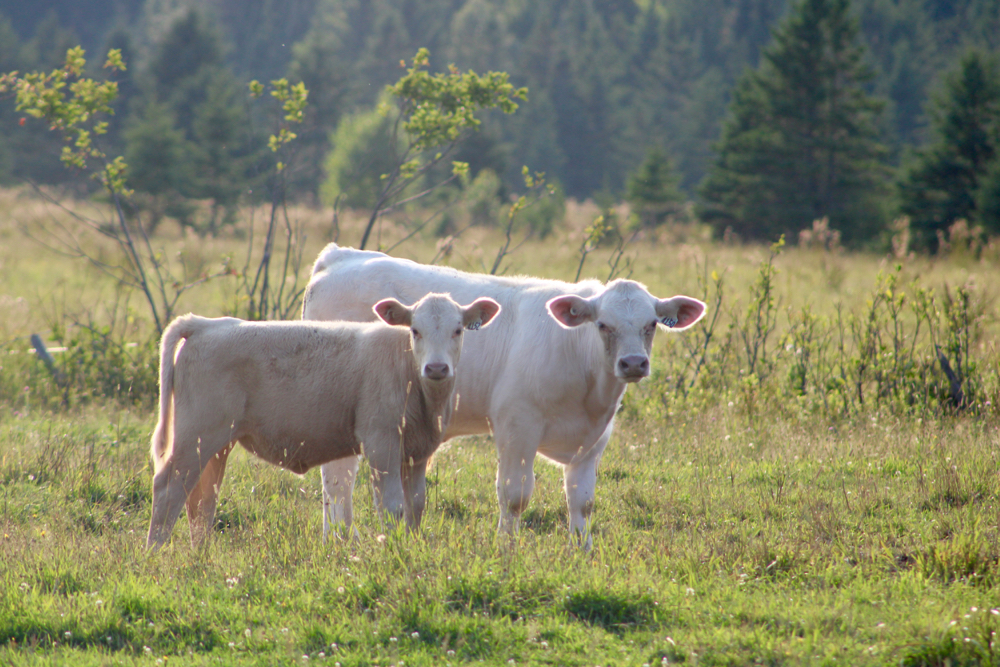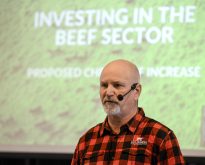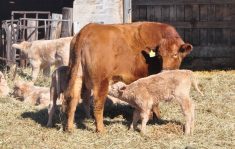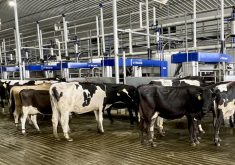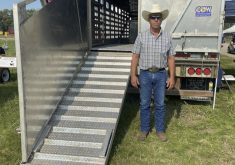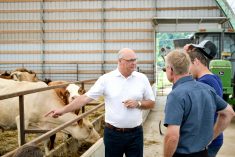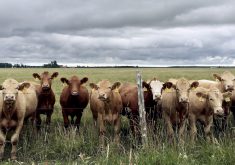As calving season comes to a close for Ontario beef farmers, producers must decide which animals to keep for replacements.
Why it matters: Selecting the best heifers determines long-term herd health and herd expansion.
Raising replacement heifers comes with considerable cost, so heifers selected for breeding must perform well and supply hardy and high quality calves.
For farmers evaluating which animals to keep, it’s important to know the heifer conception rate and weaning weight rate within the herd.
Read Also

BinSentry sensors reduce feed-bin outages
BinSentry sensors mean fewer feed bin outages and more efficient deliver for feed mills.
The Ontario average heifer conception rate is 87 per cent, says James Byrne, Ontario Ministry of Agriculture Food and Rural Affairs beef specialist. That means 12 heifers must be bred for every 10 pregnancies achieved.
As well, the average weaning percentage within Ontario is 75 per cent according to Byrne. That means 13 heifers are needed to get 10 that each raise a calf to weaning.
“If a farmer knows their conception rate and their weaning rate, they will be able to understand how many heifers they need to retain,” says Byrne.
The number of animals required as replacements also depends on cow longevity and age at first calving. The longer cows remain productive in the herd and the younger the heifers are bred, the more calves they will produce over their lifetimes, requiring fewer replacements.
Culling also must be factored into replacement heifer numbers.
When choosing which cows to keep and which to market, both the cows and their calves must be considered.
Calf health, size and maturity should be gauged, along with the hereditary characteristics of the dam.
“The most important characteristics which are transferred from the cow to the calf are the animal’s temperament, calving ease and calf weaning weight — directly related to the milk production of the cow,” says Byrne.
These three traits are keys to building the productivity and management ability of the herd.
It’s important to select heifers from mothers that consistently deliver high weaning weights. This is directly heritable and the replacement heifer will perform in a similar fashion.
“If you have a cow that consistently delivers calves on high weaning weights, there is a good probability that trait will be transferred to her daughter and, therefore, she (the daughter) will produce calves that have high weaning weights,” says Byrne.
As well, temperament is a key consideration because because a calm cow is easier to manage.
Calving ease is important because it affects the amount of work at calving and can have longer term physical effects on the animal.
The more difficult the calving, the longer it takes for that animal to come back into heat and the more likely the animal will be outside.
A cow that has a consistently longer breeding cycle of greater than 365 days will likely pass that trait onto its calf. If the calf is chosen as a replacement, it will consistently be out of cycle with the normal breeding program.
Within herd or buy new genetics?
There are many advantages to selecting replacement cattle from within the herd compared to buying them and introducing new animals. Selections from within the herd means its breeding and health history are already known. The farmer will also likely have better insights into hereditary traits from the mother.
By using replacements from within the herd, heifers can be managed to the owner’s protocol and there is no risk of introducing new diseases to the herd.
Once the replacement heifers are chosen, producers should have them bred three to six weeks before the main breeding season. A first-calf heifer takes longer to cycle after calving compared to a mature cow.
“If you calve earlier than the rest of the herd, when she goes to calve for the second time, she will be calving during the regular (calving) season,” says Byrne.
As well, producers must manage the heifers differently than mature cows because the young animals may have different health and feeding requirements and should be monitored. Once they have their first calves, they can be introduced to the main herd.



